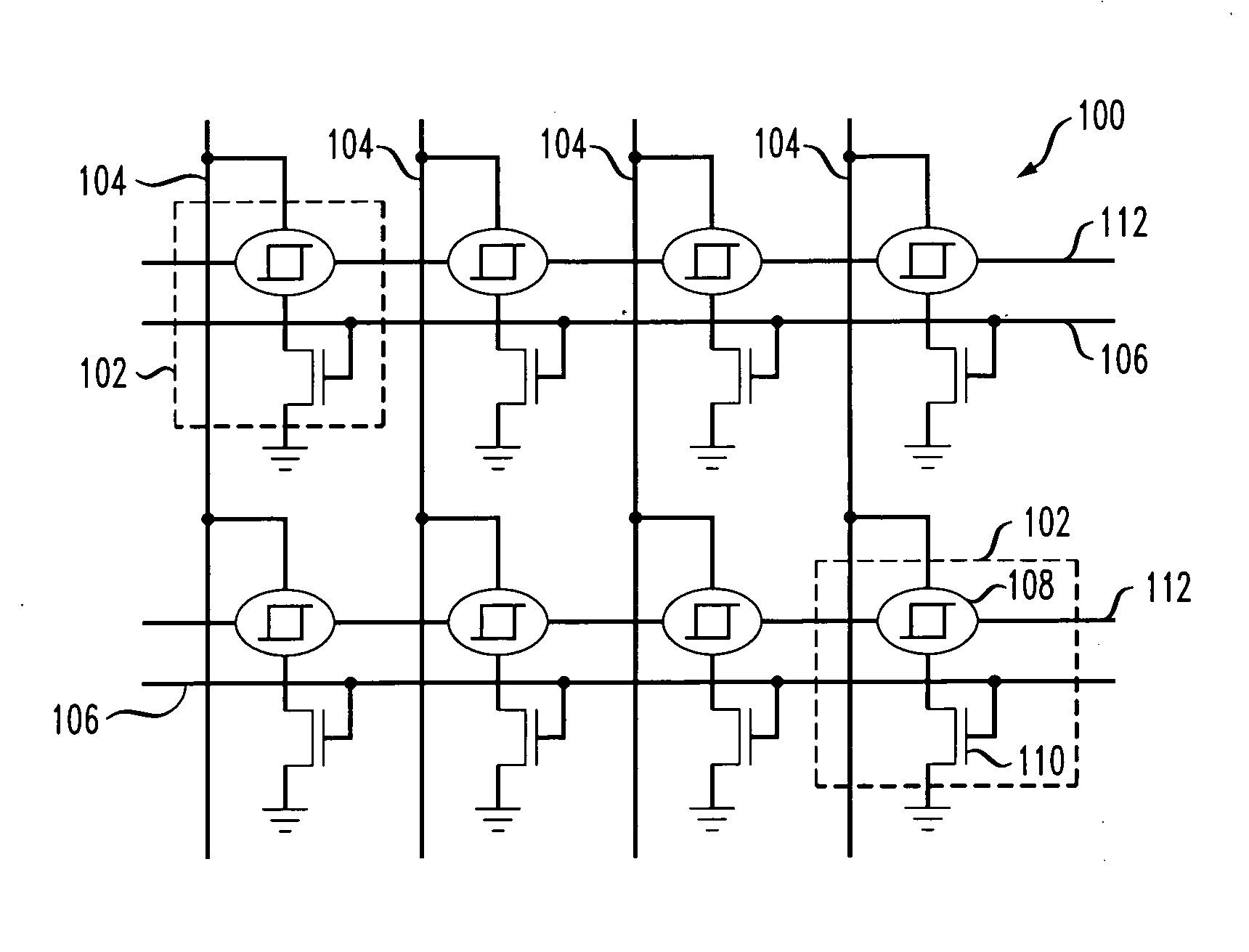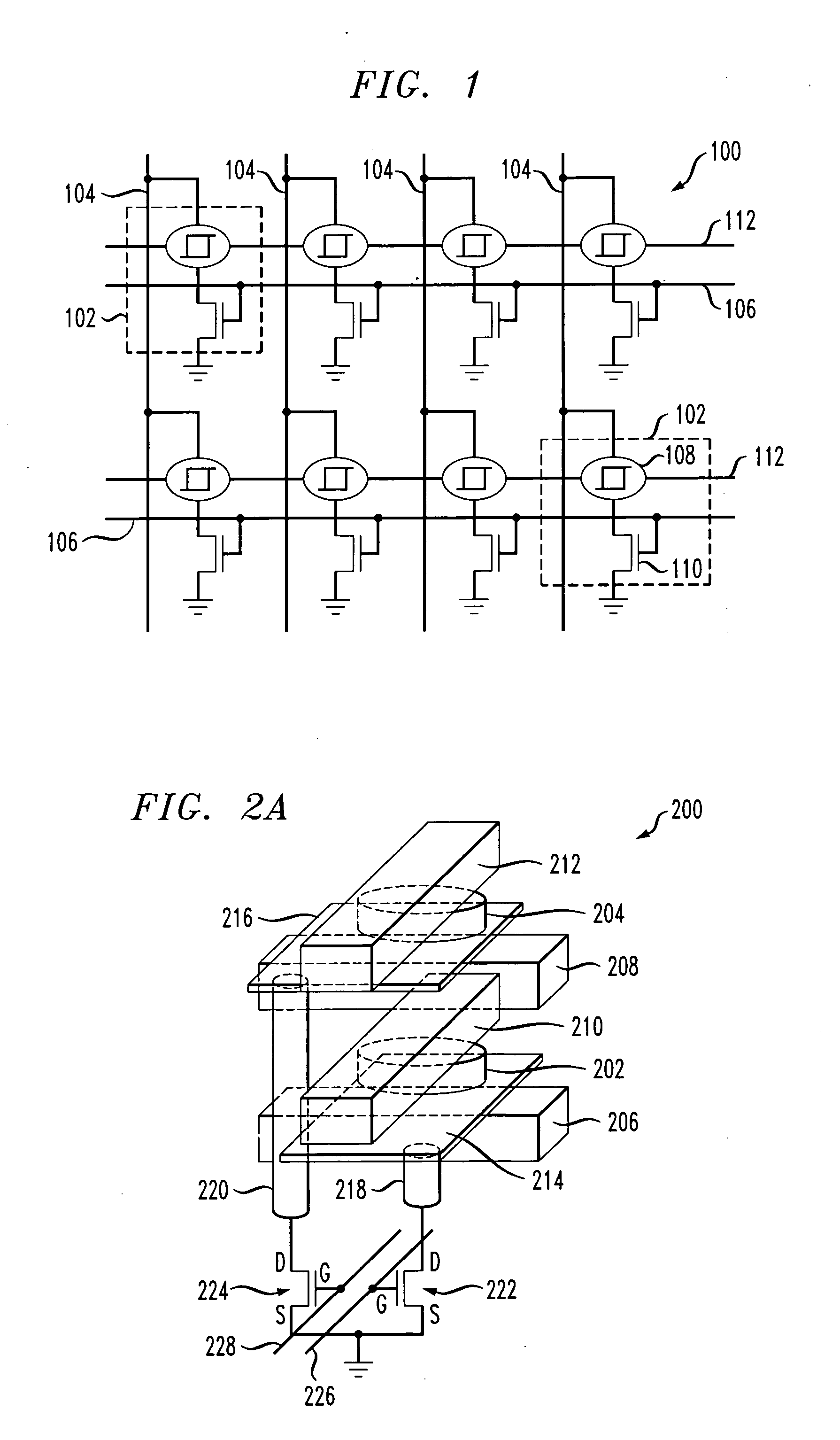Magnetic random access memory cell
a random access and memory cell technology, applied in the field of memory devices, can solve the problems of not significantly increasing the cost of manufacturing the improved magnetic memory cell, and achieve the effects of reducing the lateral size of the associated mtj device, increasing the cell density, and reducing the total magnetic moment of the memory cell
- Summary
- Abstract
- Description
- Claims
- Application Information
AI Technical Summary
Benefits of technology
Problems solved by technology
Method used
Image
Examples
Embodiment Construction
[0012] The present invention will be described herein in the context of an illustrative magnetic memory cell which may be used in an MRAM. It should be appreciated, however, that the invention is not limited to this or any particular memory cell architecture. Rather, the invention is more generally applicable to techniques for advantageously increasing a density of the magnetic memory cell without also reducing a lateral size of the magnetic storage element(s) associated with the cell. Since the total magnetic moment of the memory cell is directly related to the lateral size of the corresponding storage element, the total magnetic moment of the memory cell is beneficially maintained. Moreover, although implementations of the present invention are described herein with reference to metal-oxide-semiconductor (MOS) transistors and MTJ devices, it should be appreciated that the invention is not limited to such devices, and that alternative devices, such as, for example, bipolar junction...
PUM
 Login to View More
Login to View More Abstract
Description
Claims
Application Information
 Login to View More
Login to View More - R&D
- Intellectual Property
- Life Sciences
- Materials
- Tech Scout
- Unparalleled Data Quality
- Higher Quality Content
- 60% Fewer Hallucinations
Browse by: Latest US Patents, China's latest patents, Technical Efficacy Thesaurus, Application Domain, Technology Topic, Popular Technical Reports.
© 2025 PatSnap. All rights reserved.Legal|Privacy policy|Modern Slavery Act Transparency Statement|Sitemap|About US| Contact US: help@patsnap.com



